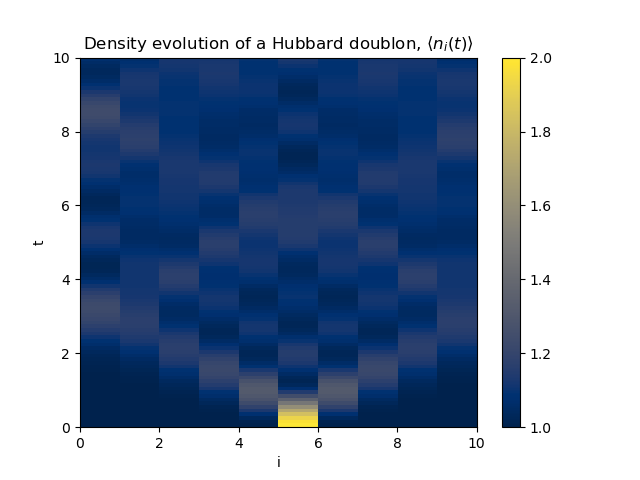Time evolution of doublon in a 1D Hubbard chain
We consider a one-dimensional Hubbard chain, and time evolve an initial antiferromagnetic state, where a doublon is introduced in the middle of the system.
#include <hydra/all.h>
void measure_density(int n_sites, hydra::StateCplx const &v) {
using namespace hydra;
for (int i = 0; i < n_sites; ++i) {
auto sz = inner(Bond("NUMBER", i), v);
printf("%f ", real(sz));
}
printf("\n");
}
int main() {
using namespace hydra;
int n_sites = 10;
double t = 1.0;
double U = 8.0;
double precision = 1e-12;
BondList bonds;
for (int i = 0; i < n_sites; ++i) {
bonds << Bond("HOP", "T", {i, (i + 1) % n_sites});
}
bonds["T"] = t;
bonds["U"] = U;
auto pstate = ProductState();
for (int i = 0; i < n_sites; ++i) {
if ((i % 2) == 0) {
pstate << "Dn";
} else {
pstate << "Up";
}
}
pstate[5] = "UpDn";
auto block = Electron(n_sites, 5, 6);
auto v = State(block, pstate);
measure_density(n_sites, v);
// Do the time evolution with a step size tau
double tau = 0.1;
for (int i = 0; i < 100; ++i) {
v = time_evolve(bonds, v, tau, precision);
measure_density(n_sites, v);
}
return EXIT_SUCCESS;
}
Plotting the resulting data, will give a picture like this:
